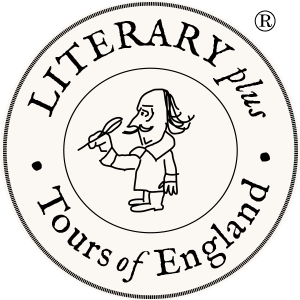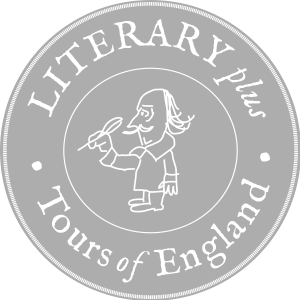10 May Charles Dickens’ Kent and London
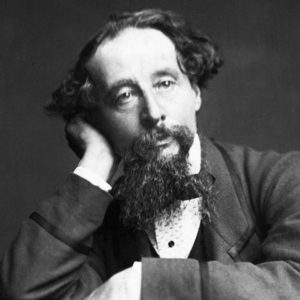
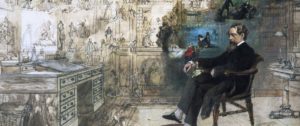
“Have a heart that never hardens, and a temper that never tires, and a touch that never hurts.” – Charles Dickens (Hard Times)
Dickens Basics
Charles Dickens is, in the view of many, the greatest Victorian novelist. He’s certainly the most popular and widely read. Adaptations of his books for film and television have created a large audience for his brilliant stories and colorful characters. Remarkably, Dickens had no formal education. Even so, he edited a weekly journal for twenty years and wrote fifteen novels, five novellas and hundreds of short stories. He also gave readings, including on two tours of the United States (1842 and 1867-68) where he became a huge celebrity. In whatever spare time he might have had, Dickens campaigned for children’s rights and other social reforms.
Dickens was born in Portsmouth in 1812 and spent the first three years of his childhood there. The modest family home is now the Charles Dickens Birthplace Museum. The Portsmouth City Museum houses a permanent Dickens collection and in 2014 a life-size statue was unveiled in the city’s Guildhall Square. Portsmouth, which lies about seventy miles southwest of London, is well worth visiting: as one of the world’s most famous seaports and home of the Royal Navy, it’s steeped in maritime history from Tudor times to D-Day. However, Judy and I didn’t go there during this literary tour.
Charles Dickens’ Rochester
Our first stop was the ancient small city of Rochester: a favorite childhood haunt of Dickens. He based many novels there, including Great Expectations (1860-61). We took the easy two-mile self-guided walk around central Rochester which takes in many Dickens-related sites, including Restoration House (the inspiration for Miss Havisham’s house). In the garden of Eastgate House we saw the Swiss chalet in which Dickens wrote Great Expectations and A Tale of Two Cities (1859). The chalet was transferred there from his home at Gad’s Hill Place in the nearby village of Higham. Dickens lived for the last fourteen years of his life at Gad’s Hill Place and it was there that he died in 1870. Although it’s now an independent school, guided tours are available on selected days during the summer. From Higham we took the five-mile drive to the village of Cooling to view the graveyard of St James’ Church, the inspiration for the memorable opening scenes of Great Expectations. Here it was possible to see the marshes that were central to the story and so faithfully reproduced in the studio for David Lean’s brilliant 1946 film.

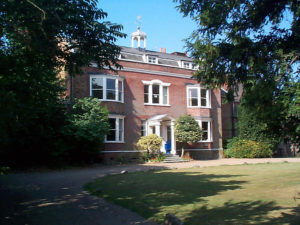
Charles Dickens’ Broadstairs
A gentle drive through lovely countryside brought us to the seaside town of Broadstairs on the east Kent coast. Dickens loved Broadstairs and its wide sandy beaches. He and his family spent their summer holidays there from 1839 to 1851. The town holds a festival in his honor in June every year. Our first stop was Dickens House: a cozy little cottage in the town center that was the inspiration for the home of Aunt Betsey Trotwood in David Copperfield (1849-50). It’s now a museum full of Dickens memorabilia, including letters he wrote about Broadstairs. On top of a cliff overlooking the town sits Bleak House. It was while staying there (when it was called Fort House) that Dickens wrote David Copperfield, his most autobiographical novel. It’s also there that he began working on Bleak House (1852-53), hence the new name for the property. The house was once a popular Bed & Breakfast, but it was not open to the public when we were there. As an aside, Broadstairs is also the location for the final action in John Buchan’s classic thriller The Thirty-Nine Steps (1915), although the famous steps have long since gone.

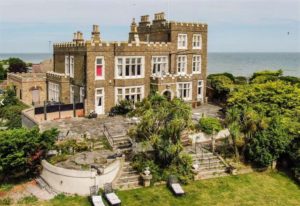
Literary Canterbury
While we were in Kent, Judy and I decided to visit Canterbury. Although there are no significant Dickens-related sites there, it’s certain that he knew the city well. He’s known to have acted as a guide for visiting friends and he makes frequent reference to it in David Copperfield. In fact, David went to Dr Strong’s school in Canterbury. From a literary point of view, the city’s most famous for the medieval masterpiece The Canterbury Tales (1387-1400) by Geoffrey Chaucer. Also, the playwright Christopher Marlowe was born in Canterbury in 1564: the same year as Shakespeare, on whom he was a great influence. Both Chaucer and Marlowe are commemorated by statues in the city. We took one of the many self-guided walking tours to view the ancient walls, originally built by the Romans, and the medieval center with its cobbled streets and timber-framed houses. The impressive Canterbury Cathedral is the headquarters of the Church of England. It’s a World Heritage Site in combination with St Martin’s Church, the oldest church in England, and St Augustine’s Abbey, both of which were founded during the early stages of the introduction of Christianity to the Anglo-Saxons.

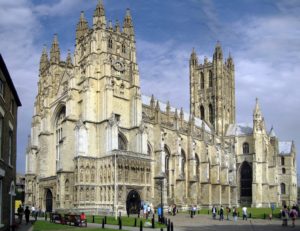
Charles Dickens’ London
Dickens is perhaps the writer most associated with London. He grew up, lived and worked there – and almost all his novels feature London locations. He had wanted to be buried in Rochester Cathedral, but instead his grave’s in Poets’ Corner in Westminster Abbey. We paid our respects, then began a self-guided walk that took in many locations in Dickens’ novels. We passed a bust of Dickens, set in the façade above the Red Lion Inn on Parliament Street. This is where David Copperfield, although too young, tries to order a glass of Genuine Stunning Ale. We walked along historic Fleet Street where, in a narrow side alley, we found Ye Olde Cheshire Cheese. This atmospheric pub, rebuilt shortly after the Great Fire of 1666, was a regular haunt of Dickens and other literary figures, including Dr Samuel Johnson and Sir Arthur Conan Doyle. We finished our walk at the interesting Charles Dickens Museum, a terraced Georgian house at 48 Doughty Street in Bloomsbury. This was Dickens’ home from 1837 to 1839 and where he wrote Oliver Twist (1837-39) and Nicholas Nickleby (1838-39), the success of which catapulted him to international fame.
Postscript: Dickens on Screen
As a fervent Dickens fan, I cannot resist offering my recommendations for film and TV adaptations of some of his greatest books. Whether or not the reader is familiar with the original stories, these adaptations are well worth viewing.
A Christmas Carol (1843) has been adapted countless times. My personal favorite is the movie Scrooge (1951) which starred the incomparable Alastair Sim. Dickens’ novella was the inspiration for the commendable film The Man Who Invented Christmas (2017) with Dan Stevens.
David Copperfield (1935) with Freddie Bartholomew and Frank Lawton.
A Tale of Two Cities (1935) with Ronald Colman and Elizabeth Allan.
Great Expectations (1946) with John Mills and Valerie Hobson.
Oliver Twist (1948) with Alec Guinness and Robert Newton.
Our Mutual Friend (1998) BBC TV mini-series.
Bleak House (2005) BBC TV mini-series.
Little Dorrit (2008) BBC TV mini-series.
If you’re thinking of visiting Kent, allow at least three days (preferably a week or more) to explore the county (including Rochester, Broadstairs and Canterbury). Be sure to outfit yourself with comfortable shoes, a light jacket and an umbrella. Looking for more to do in the area? Consider Dover Castle, the awesome medieval fortress overlooking the English Channel. To visit Kent and other fascinating sites associated with your favorite writers, plan your itinerary here.
